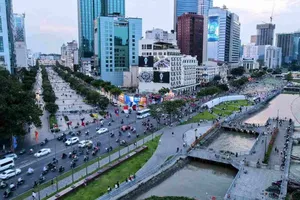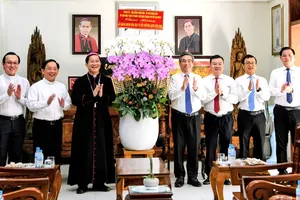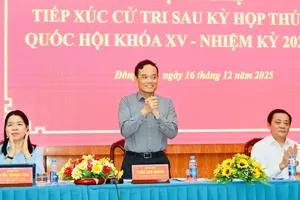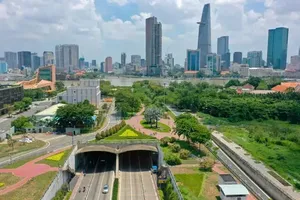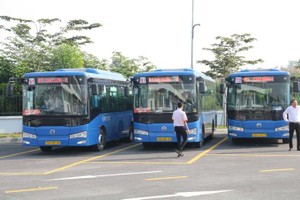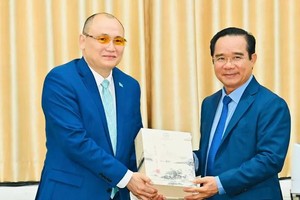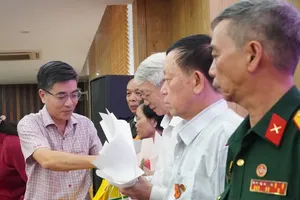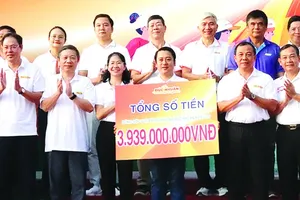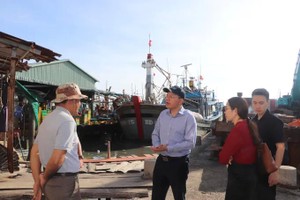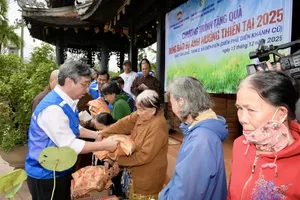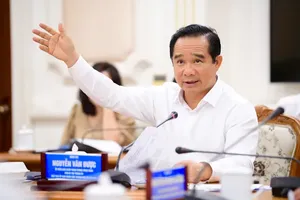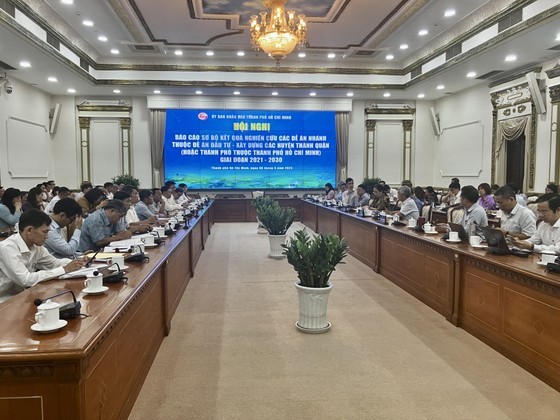 |
At the conference |
Today, the People's Committee of Ho Chi Minh City held a conference to make preliminary reports on branch projects under the project of investment and construction of districts into districts or cities of HCMC for the period from 2021 to 2030.
The transformation of suburban districts to districts or cities of Ho Chi Minh City in the 2021-2030 period is one of the breakthrough programs of the southern metropolis according to the Resolution of the 11th Party Congress of the Ho Chi Minh City Party Committee.
At the conference, Vice Chairman of Ho Chi Minh City People's Committee Vo Van Hoan said that the project of investment and construction of districts into districts or cities of the city in the 2021-2030 period was falling behind schedule for two years; therefore, if administrations are still reluctant to include it in the general planning of Ho Chi Minh City, the recent studies will be regarded as abandoned.
Vice Chairman Hoan emphasized that the construction of districts into districts or cities is to develop districts into ecological, green, digital satellite cities, not urban areas according to spontaneous development. Accordingly, these urban areas need to have a development orientation that is superior to that of normal urban areas.
This superior development orientation aims to curb spontaneous urban sprawl as the present infrastructure. Rental dilapidated houses are still constructed without electricity and water infrastructure; thus, roads are flooded when it rains and dusty when it is sunny; worse, city dwellers still maintain many uncivilized habits, such as littering indiscriminately.
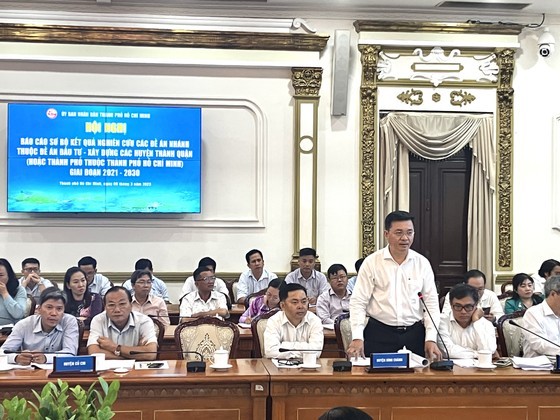 |
Chairman of Binh Chanh People's Committee Vo Duc Thanh speaks at the conference |
The urban model that the districts are aiming to build must be comprehensively developed in all aspects. In the economic aspect, industry and services must be identified as the core pillars, while governments try to maintain agriculture stability. These municipalities must be different from the central city. Inhabitants in these municipalities can enjoy living in better places, better facilities, and better health care.
Building a compact city avoids external sprawl. Instead, it builds super tall buildings in urban areas where life infrastructure such as public transportation is well in place, reducing social costs and upgrading living standards, said Mr. Vo Van Hoan.
For the sustainable transformation and development of five suburban districts, the municipal People's Committee directed related departments to coordinate with the Ho Chi Minh City Institute for Development Studies and districts to carry out projects including urban economy, urban infrastructure, urban apparatus, urban culture, and urban people.
Among the above-mentioned projects, for the first time, Ho Chi Minh City directed to study on the topic of urban people in order to develop and provide solutions to accelerate the process of transforming farmers into urban areas. This is creativity in proposing and assigning new research topics in construction investment projects to transform districts into districts or cities within the city. This contributes to sustainable development because people are at the core of all projects.
Reporting at the conference, Mr. Du Phuoc Tan, former Head of the Ho Chi Minh City Institute for Development Studies’ Urban Management Research Department, said that by comparing the criteria for the urban classification of 5 districts, by 2030, most of the 5 suburban districts do not meet the criteria of first urban class. Accordingly, Can Gio, Binh Chanh and Cu Chi outlying communes with much agricultural land are difficult to be upgraded into districts.
In addition, some experts suggested that Ho Chi Minh City consider an open plan on the possibility of merging adjacent districts with unsatisfactory criteria, in order to complement each other, and at the same time must be consistent with the city’s general development orientation.
In the field of state management, it is recommended to the Central Government complete synchronously the legal system to carry out the Politburo’s Resolution 31 on directions and tasks for the development of Ho Chi Minh City until 2030 with the vision to 2040.
Along with that, it is recommended to have a breakthrough mechanism for Ho Chi Minh City such as recruiting additional civil servants in state organizations communes and wards based on criteria depending on the local practice in terms of area size, population, the complexity of the area to fight the current shortage of staff resulting the overload of work.
At the same time, it is recommended that the Central Government have a mechanism to further promote investment in infrastructure, transport and connectivity within the Southeast region and the Mekong Delta to promote resources in regional linkages, improve economic growth and attract talented people. At the same time, a breakthrough mechanism for the policy of attracting talented people is needed.
